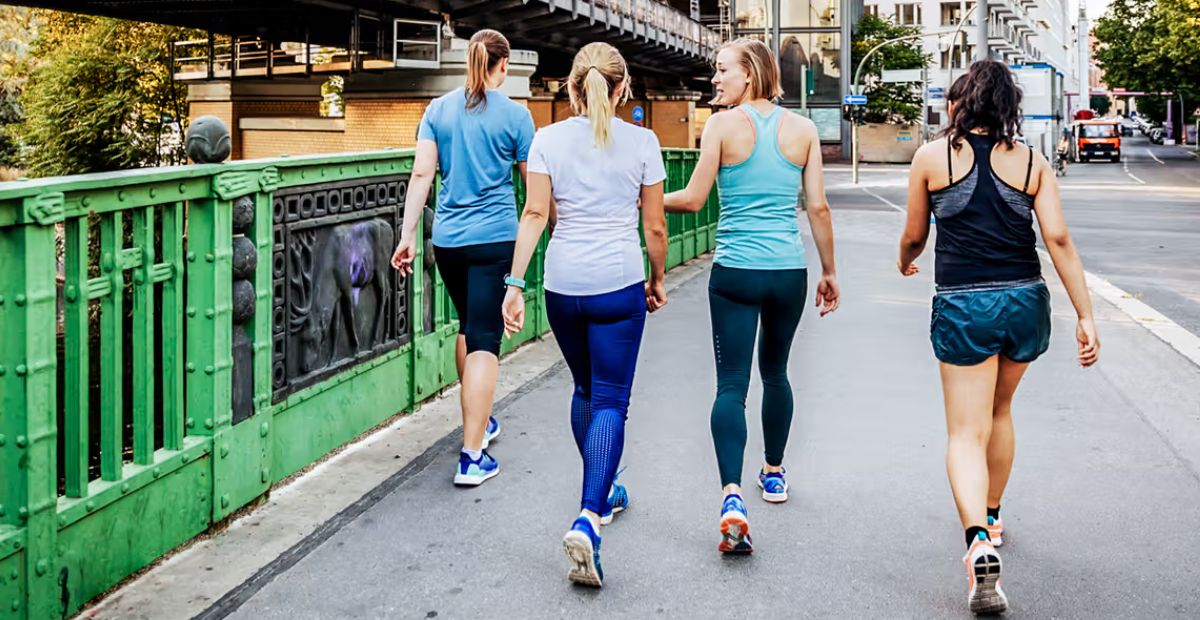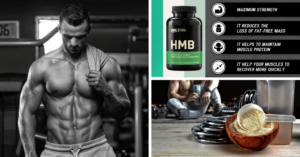After following these tips regarding how to walk faster with short legs, you can walk faster and more effectively by putting more effort into it. If you know how to do it right, walking faster can feel easier and more natural.
The next methods use parts of racewalking, like good posture, the right stride, strong arm movement, and foot movement, but they need to include hip movement.
In This Article
Good Things About Walking Faster
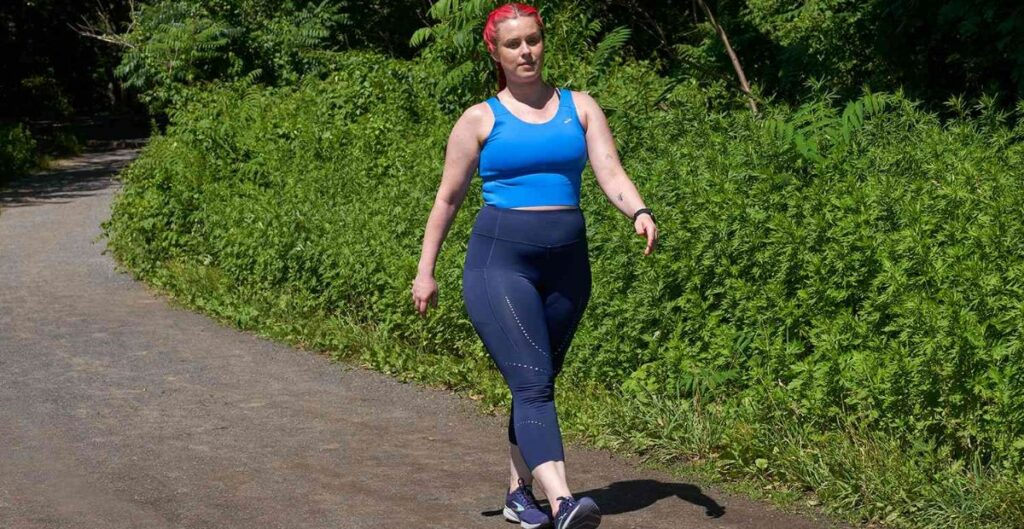
Before we talk about how to walk faster with short legs, we should talk about why you might want to. Several strong reasons to speed up include the following:
➢ Do more short workouts.
Speed up your walking by a certain amount of distance. Walking the same way over and over will help you finish faster. By going for a set amount of time, you will cover more ground, which will make you burn more calories.
➢ Better Intensity
Raise your heart rate to the level of a strong or even moderately intense workout. As a result, walking will give you a more substantial exercise boost, improving your cardiovascular health.
➢ Burn More Calories
You can finish your walk faster or farther by speeding up, which uses more muscles. This means you burn more calories.
➢ Improve Pace
Cut down on the time it takes you to finish charity walks and walking races, and you might even beat your walking friends and family.
How to walk faster with short legs
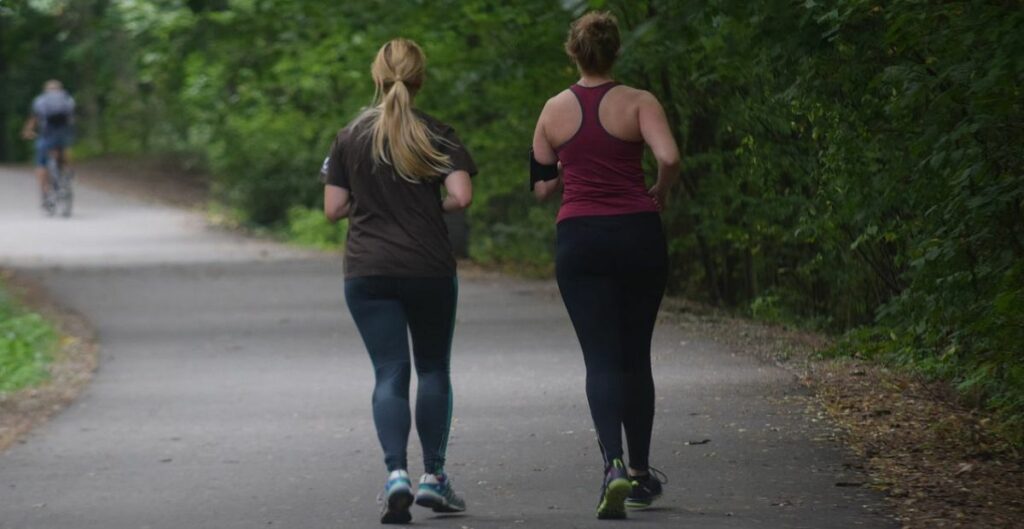
Increase your workout intensity slowly, ensuring you take all the safety measures you need to avoid getting hurt. You can start walking faster by getting better shoes, working on your form, and changing your steps. In addition, you should set your starting point by measuring your baseline and adding speed training to your practice. The steps to fix each of these problems are given below.
❖ Determine the Baseline
Take some baseline measures to find out how fast you’re walking now and how fast you’re walking at your fastest speed. An app on your phone, a fitness tracker, or a smartwatch can help you find your standard mile time. Many smart techs can figure out your heart rate and mile time simultaneously.
You could also keep a steady pace for a mile. A GPS, car odometer, or bicycle odometer can be used to find a nearby track, kilometer, or mile-to-walk device. To get ready to run at your fastest speed, take a five- to ten-minute warm-up walk. Try to get two to three times your best time for this mile. Take your pulse at the end of a mile to determine your heart rate.
❖ Keep your head up
While you walk, keep a tall stance with your chin level with the ground and your ears above your shoulders.
Imagine that there is an invisible string attached to the ceiling, and it is gently pulling your head up. This might keep your head from falling into your body while you walk.
Keep looking forward with your eyes. As you walk, keep your eyes on the area 10 to 20 feet before you.
❖ Lengthen your back
As you walk, keep spine elongation in mind. You should avoid slouching, hunching, and leaning forward because they can stress your back muscles.
❖ Engage your core
Also, when you walk, your stomach muscles help you move more freely and do an important job.
At the start of each step, draw your belly button toward your spine to work and tighten your core muscles. This might help you keep your balance and stability. In addition, walking can help ease stress and pain in the back.
❖ Swing your arms
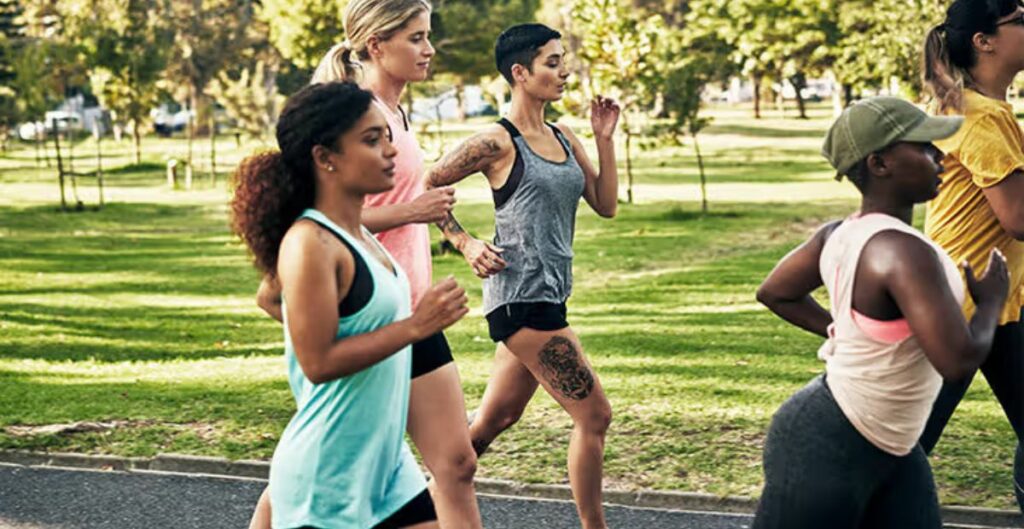
When you walk, gently wave your arms at your sides. Ensure that your shoulders, not your wrists, are where your arm swing starts.
- Do not swing your arms across your body.
- Try not to swing your arms too high. Wear them around your middle instead of your breasts.
❖ Step from heel to toe
Always walk with your heels on the ground. To do this, you land on the ground with your heel first, then roll through your heel to your toe, and finally extend your stride with your toe. Do not walk on your heels or take steps with your feet flat on the ground.
❖ Take Short Steps
One change that stands out in this development is that the front-body gait is getting shorter. This is done by putting the bottom of the landing foot directly in front of the body, ahead of the COM. By getting into this pose, you can move your body weight to your front foot with less effort. The effort needed to move the other foot forward goes up as the foot moves farther in front of the body. It’s possible to say that walking is a series of forward falls.
When the arm is stretched out in front of the body, however, it acts as a brake, slowing down the movement and creating a choppy, bouncy stride that puts more stress on the lower body joints, especially the knee. When you fall closer to the ground, you feel less impact, which makes it easier for your body to move over to your front foot and for your back foot to swing forward to catch your body as you move to the next step.
❖ Land on the Heel
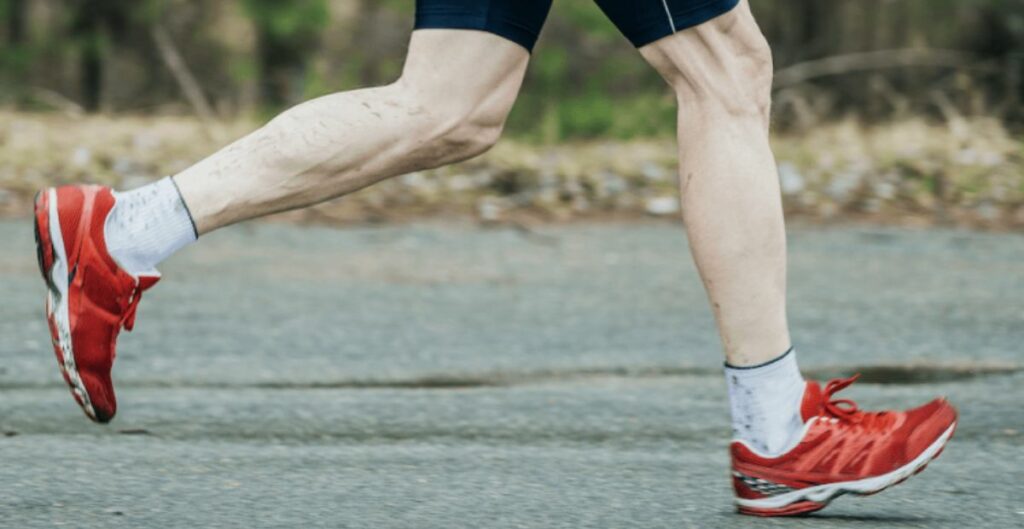
When a person walks, their feet hit the ground forward, with the toes raised and the heel dropped. Aside from stressing where the heel should be placed, it is also helpful to make walkers aware of their ankle’s range of motion. A good ankle range of motion when the front heel hits the ground helps keep the whole limb in the right place.
When the knee of the landing limb is stretched out, the leg looks straight to the viewer. The knee bends when the foot is flat or on the forefoot. This makes the walk more like a shuffle or jog. By putting the foot with the heel down and the toe up, you can make the heel-toe roll easier, which makes the ankle more flexible.
Knee extension exercises can help people who hurt their knees or are weak in the knees because they strengthen the quadriceps, help keep the joint stable, and avoid injuries. Also, landing with a straight leg lowers the risk of knee injury because the braking force is spread out over the whole leg instead of being concentrated in the knee tendons, like when you run or jog with your knee bent.
What not to do while walking
If you want to keep your muscles and joints from getting hurt or overworked, stay away from the following things.
- Do not look down. Making eye contact with your feet or phone often while looking down can put extra stress on your neck.
- It’s best to take only a short steps. Putting your back leg out straight gives you strength. Researchers have found that overstriding can put too much stress on the joints in the lower legs.
- Do not roll your hips. Your hips should stay as level as possible while you walk.
- Do not stoop. To keep your back and shoulders from getting strained, walk or stand with your spine long and your shoulders dropped and backward.
- Stay away from going for a walk while wearing the right shoes. When you walk for more than a few minutes, make sure your shoes fit well, support your arch and heel, and have enough cushioning to lessen the pressure of your feet on the ground.
Reasons Why Your Stride Is Crucial
Instead of taking too long steps for your body, you will walk faster if you take more steps in less time. Visitors often need to be more careful when trying to walk faster. Instead, you will keep your normal stride length while learning to use it better.
- Your back foot goes under your body, and your knee bends after you make force, moving your leg forward without lifting it. Then, you straighten your knee and bend your ankle so your heel can hit the ground during your forward step. One could imagine showing the bottom of the shoe.
- When people walk quickly, they take more short steps instead of longer ones.
- The best place for your heel to be when it hits the ground is close to the front of your body. When you take a step, your back leg rolls back and forth while your toe gets ready for a strong push-off.
- Do everything you can to keep your back foot on the ground so that you can move your toes off the ground completely.
- Your pelvis should easily move from front to back during each step, not side to side. When your right arm moves forward, your left hip will follow it, and when your left leg moves forward, your right hip will follow it. It’s not simple. Do not make the hip movement too big.
- When you walk, your back should be straight, and your toe should be the first thing that moves. The space between it and the body should be cut down, and the forward foot should touch it more closely instead of overstepping.
How to Build Speed
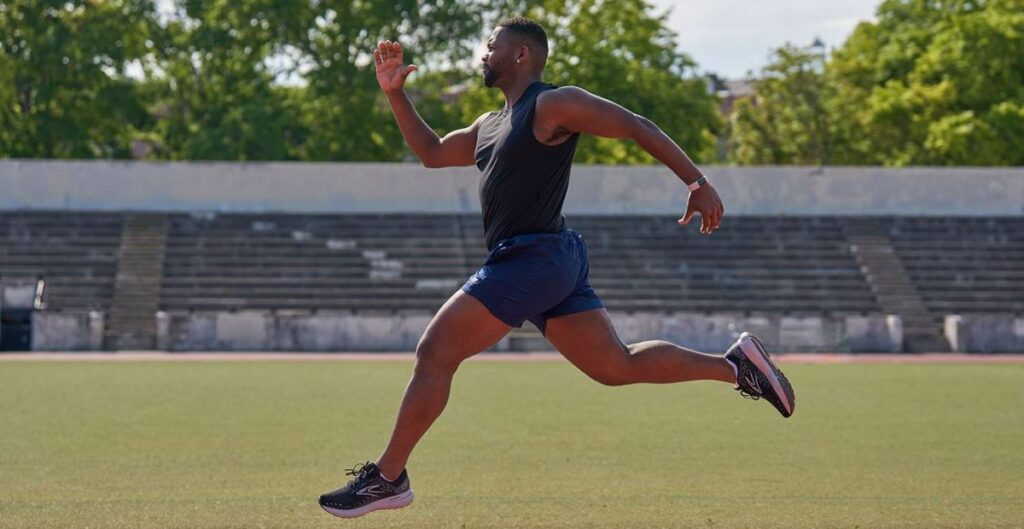
As part of your walking routine, use your quick walking method. As you get used to a new way of using your legs, limbs, and lower body, slowly extend your time. Practice the move for 10 minutes at a time after warming up.
This time limit can be extended for a few more days if you don’t feel any more pain or difficulty. Anyone who changes the way they walk will probably feel pain in their shins at first, so start slowly.7
After getting good at the new method and getting to the point where you can walk quickly for 20 to 30 minutes, you can use it in your speed workouts. The economy practice is one type of exercise that is suggested.
What are the benefits of walking correctly?
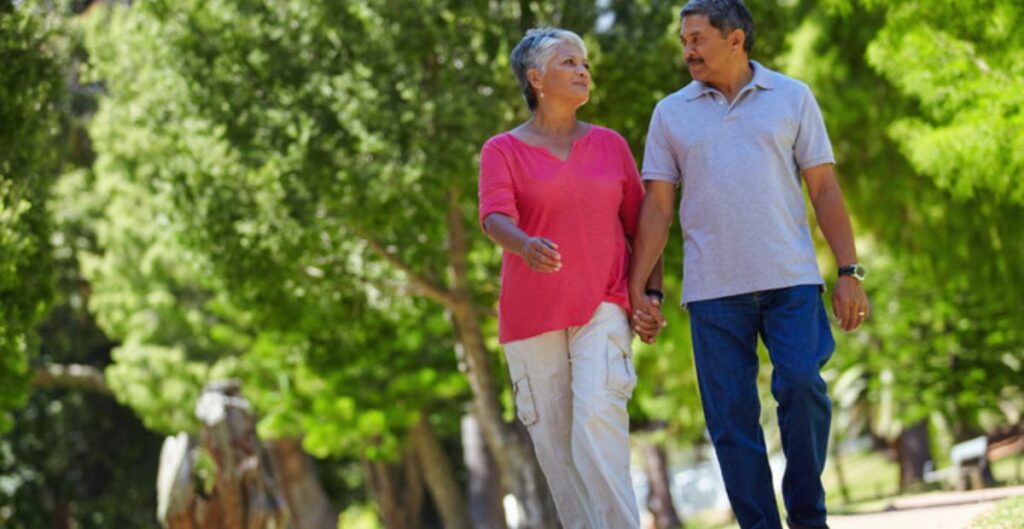
The right posture and walking method can help your body and mind in many ways. One of these benefits is that your muscles and joints won’t hurt. Walking correctly keeps your joints, ligaments, and muscles from being overworked and strained. This will give you more energy. A low-arching stance makes it harder to walk quickly. It can make your muscles break down faster while walking, and good form helps keep your energy up.
- Better health of the lungs. When you walk straight with your shoulders back, your lungs can expand fully, which makes breathing easier and more efficient.
- Better circulation system. Better blood flow to all body parts is made possible by ensuring the body is properly aligned and moving.
- A better way for the body to digest food. Your body can better absorb food when enough blood flows to the digestive system and your organs are not squished together.
- A stronger core strength. The stomach muscles get stronger when you walk upright and with the right force.
- A drop in headaches caused by stress. To avoid neck strain, people who walk with their heads up and shoulders back instead of bending forward may experience fewer tension headaches.
- Balanced things out more. Using the right form and stance when walking may help improve your balance and make you less likely to trip.
Conclusion:
Walking properly has many benefits, using the right technique and posture. It can keep your muscles and joints from getting strained or tense without reason. It can also lower your risk of back pain and muscle aches and make you less likely to get hurt.
Walking with good balance and gait is not hard, but you should practice. Some important rules are standing up straight, walking with a tall stride, keeping your shoulders and back relaxed, and squeezing your core.
If you need help regarding ‘how to walk faster with short legs’ with good posture or are having trouble with your walking gait, talk to your doctor or physical trainer about ways to improve your walking style.
Also Read:

